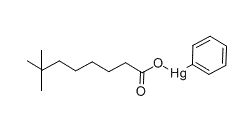Title: RIGID POLYURETHANE FOAM HAVING A SMALL CELL SIZE
Number/Link: WO2015/109488
Applicant/Assignee: Dow
Publication date: 30-07-2015
“Gist”: Rigid foams are blown with CO2 under pressure
Why it is interesting: It is known that the thermal conductivity of conventional rigid polyurethane foams can be most efficiently improved by reducing the conductivity contribution of the gas present in the foam cells. This, in turn, can be achieved by reducing the gas pressure, by using ‘heavy’ blowing agents or by reducing the average cell size. The current application discloses rigid PU foams having cell sizes small enough to achieve a thermal conductivity of less than 16 mW/m.K without the need for a strong vacuum or special blowing agents. This is achieved by first saturating the polyol formulation with CO2 under pressure, then adding the isocyanate and increasing the pressure for a set amount of time and finally releasing the pressure to allow the material to expand. Examples are given using a pressure of 7 MPa at 40°C for 30 minutes to saturate the polyol, and a pressure of 10 MPa for up to about 10 minutes after addition of the isocyanate. Foams with average cell sizes of 8 to 70 μm and porosities of up to 90% are obtained at densities of about 250 to about 300 kg/m³. Oddly enough no thermal conductivity (λ) values are given.



